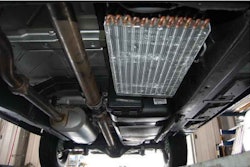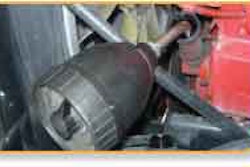
A recent news item notes that Swiss Bank UBS is revising its 44-page dress code, which was widely ridiculed when it came to light last year. Among its many morsels of meddling were instructions on how women should apply makeup. One of the gems for men: “Tie knots should match the morphology of your face.”
Perhaps someone from UBS has been moonlighting at the Federal Motor Carrier Safety Administration, which has taken micromanagement to new levels with its hours of service proposal. Among the changes:
• You can’t drive more than seven hours without a 30-minute break.
• The 34-hour restart must include two midnight-6 a.m. rest periods.
• Total on-duty time, FMCSA says, “does not include time resting in a parked truck. In a moving truck, does not include up to 2 hrs. in passenger seat before or after 8 hrs. in a sleeper berth.”
These and other tweaks to an already complex hours rule show just how unattainable is the regulatory hours quest. Regulators have pursued it for years, and both they and safety advocates seem to think that drivers are puppets made from the same mold. Attach enough strings in key places and an autopilot puppeteer will keep drivers alert.
 Tweaks to an already complex hours rule show just how unattainable is this quest.
Tweaks to an already complex hours rule show just how unattainable is this quest.Granted, there is extensive research on accidents and circadian rhythms behind the labyrinth of this proposal. But what researchers also know is that sleep patterns can vary among individuals, especially when detention time and countless other factors differ so widely by haul.
It might be time to explore simpler solutions. For example, critics have suggested the more radical solution of paying by the hour instead of by the mile or percentage of revenue. That comes with its own set of problems, notably reduced productivity, but offers potential safety improvements by lessening the incentive to speed, cheat on logs or skip inspections.
Since such dramatic change isn’t on the horizon, it’s likely that a more byzantine hours rule will be approved. This will probably accelerate the use of electronic onboard recorders, whose automation would help tame any compliance confusion.
EOBRs already appear in more and more cabs, due to the introduction of the Compliance, Safety, Accountability program, as well as improved tech-nology and lower costs for the devices. Among fleets that have converted to EOBRs, a common response from drivers has been that they feared the intrusion, but now they prefer the system’s simplicity. Those pressured to fudge their logs appreciate freedom from that coercion.
Just because technology can now implement an elaborate workplace control system doesn’t mean the system is good. Still, given the competitive pressures of trucking and the impassioned politics of fatigue regulation, that seems to be where we’re headed. n










